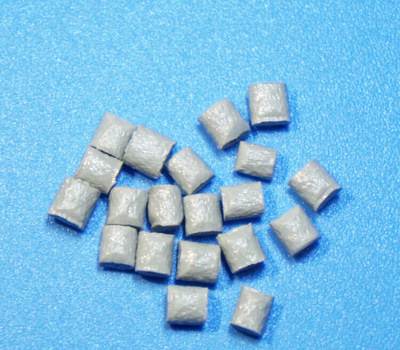What kinds of Jiangmen engineering plastics have good thermal conductivity
What engineering plastics have good thermal conductivity? Most of the traditional thermal conductive plastics are thermal insulation materials. The thermal conductive plastics developed by Zhaoke company bring new key to this field. The commercial application of thermal conductive plastics began in 1998, and more than one million pieces have been made. The products have been successfully applied in various fields, such as consumer electronics, power electronics, cars, motorcycles, lighting, medical equipment and other appliances.
Thermal conductive plastics are based on engineering plastics and general plastics, such as PP, ABS, PC, PA, LCP, PPS, peek, etc.
The typical thermal conductivity planning is 1-20w / m-k, and some grades can reach 100W / m-K. This value is about 5-100 times that of traditional plastics, and the general thermal conductivity is only 0.2w/m-k. This conductivity is also suitable for some metals, such as stainless steel with a thermal conductivity of 15W / m-k and some cast aluminum alloys with a thermal conductivity of 50-100w / m-K.

Compared with the traditional polymer materials, the thermal conductivity and impact resistance are poor. It is mainly used to replace some metal or ceramic parts which have strict requirements on the size of products, such as micro electronic components, optical components, mechanical components and medical components. When using elastomer as base material, it can be used as gasket, shock absorber or touch material.
By combining the simplicity of thermal conductive plastics with excellent thermal conductivity, the same heat transfer ability of some metals or ceramics can be completed by injection molding. Together, this new material can provide planners with more planning, and the parts are only half as heavy as aluminum products. Processing with thermal conductive plastics can shorten the molding cycle by 20 to 50 percent, and its inherent low coefficient of thermal expansion can reduce product shortening.
Source: Jiangmen engineering plastics http://diywl.cn/
-
09-14
What kinds of Jiangmen engineering plastics have good thermal conductivity
What engineering plastics have good thermal conductivity? Most of the traditional thermal conductive plastics are thermal insulation materials. The thermal conductive plastics developed by Zhaoke company bring new key to this field. The commercial application of thermal conductive plastics began in 1998, and more than one million pieces have been made. The products have been successfully applied in various fields, such as consumer electronics, power electronics, cars, motorcycles, lighting, medi
-
09-14
What are the application fields of Jiangmen engineering plastics
Five major application fields: 1. Film materials: various kinds of food, medicine, non-toxic and aseptic packaging materials; packaging materials of textiles, instruments and electrical components; base materials of audio tapes, video tapes, film films, computer floppy disks, metal coated films and photosensitive films; 2; Electrical insulation materials, capacitor films, flexible printed circuit boards and membrane switches and other electronic and mechanical fields. 2. The application of packa
-
09-14
What are the thermal functions of Jiangmen engineering plastics
Engineering plastics have been widely used in our daily life as engineering materials and substitutes for metal manufacturing machine parts. In the selection of engineering plastics, the data engineer should consider not only the mechanical function and aging resistance function of the data, but also its thermal function. There are many tests on thermal function of engineering plastics. What do we need to know? 1. The continuous working temperature indicates the heat resistance of plastic moldin
-
09-14
What are the types of Jiangmen engineering plastics
Engineering plastics have the characteristics of high rigidity, small creep, high mechanical strength, good heat resistance and good electrical insulation, which make it can be used in harsh chemical and physical environment for a long time, and can replace metal as engineering structural materials. With the development of technology, the application of engineering plastics has been extended to cars, home appliances, aviation, sports, electronics, construction and other fields. PA is a kind of e